I feel pretty grateful that I’m able to have some really wonderful conversations with artist friends, colleagues, and students in my classes. I often find that I come away from many of these dialogs with a stronger sense of clarity, focus, and purpose when it comes to my art. When I answer these, even if just for myself at a later time, I find it really helps my personal motivation too. For example, a student in one of my classes asked me recently “What does art mean to you?” and it made me think, of course, because that’s quite a question to answer. It could mean a lot of different things for different reasons, but really what it comes down to if I think of how art has always been in my life for as long as I can remember, my answer would be that art has always been there for me. It’s never let me down in that way, ever since I was a kid.
A few years ago, I remember hearing Barron Storey say once that his sketchbook is his best friend, and I feel this wholeheartedly. Art has been through a lot with me, and no matter what time of day or night, it’s been open to work things through if I needed it. Even when the conversation has lasted months. And a lot of times, it’s really given me some tough things to contemplate, and that always ends up being what I needed. Art helps me navigate in difficult times towards something better, and it’s always been a sounding board for discovering what that means.
I do enjoy the dialogs that can happen from connections made in classes. I get some very interesting questions while teaching that have somewhat to do with the technical aspects of how I paint, but when I stop to think about the answers, they almost always go in a more personal direction. For instance, being asked “What made you start painting the way you paint now?”
What’s made me paint the way I do now is everything that I’ve ever done up to this point. In other words, it was gradual and is still evolving, and it’s not only art-related. Technically speaking, there are moments that I can remember more distinctly than others when something clicked in terms of a way of working and how it made sense to incorporate these elements somehow, to combine the new and the familiar. But that’s still happening now and I would think that that never goes away. On a personal level, what made me start painting the way I paint now has more to do with trying new things and what I open myself up to share with others. It’s moments of adversity that I’d credit for that. Well, maybe it’s two distinct things that I can think of: moments of adversity, and humans who are supportive and promote connecting and sharing.
Another question is regarding tools – something along the lines of “What made you try using unconventional tools to paint with?” is asked pretty frequently.
That really comes down to the fact that I’ve always been like that, in art and life in general. I’ve always been curious about how things work and I’d be devising ways to make some odd thing work for me that can do this sort of thing that I need it to do. I really enjoy attempting to decipher and dissect some unfamiliar thing I’m looking at and then try doing something I’m unfamiliar with, motivated by that experience. I suppose the motivator is the beauty in it that I was initially drawn to. (Using the word ‘beauty’ here in a much more all-encompassing sense than the narrow ideal concept). But then it turns into a challenge for myself, a problem to solve, a hurdle to overcome, and that is a big motivator too, for me. From an aesthetic standpoint, I am absolutely drawn to the texture of things all around me, from the smallest to the largest of scale, and I’m simultaneously in awe of the simplest of things and the infinite amount of what’s possible. When it comes to tools to paint with, I’d find ways to make marks in a similar way. Just simply: How can I make that mark? What thing can I use to make that mark? It might not be an art tool per se, but it worked for what I needed it to do.
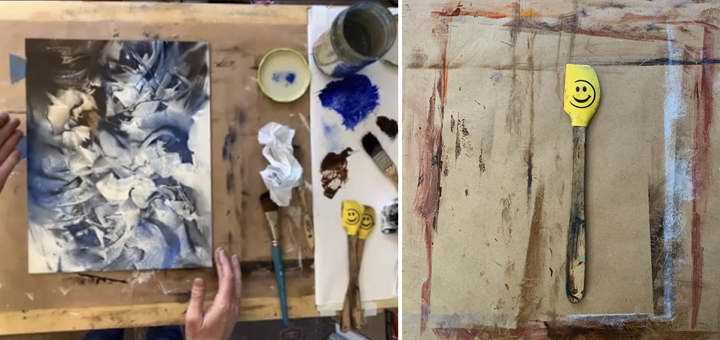
I’ve shared many articles here on Muddy Colors about the different tools I use. You can click here for one called “Using Unconventional Painting Tools”
A common question that people who tend to take my classes is “What has made you incorporate the abstract into your work like you do?” or “what made you go from figurative to more abstract?”
I think this question is based on a timeline sort of observation, and in that way, it would seem logical that it would essentially be a coalescence of all things I’m interested in and tend to gravitate towards being combined in the current work I do. Figurative is often associated with academic, and I think it’s only natural that an artist would at some point want to break from solely academic work to find what that experience can combine with to create a voice of our own. What that means, though, can be different for everyone. But I didn’t have such a linear relationship with figurative and academic work. I’ve always sought out the things that I feel challenged in in order to be stronger at them. In the case of academic figurative drawing and painting, I started to really acknowledge that I needed to improve in the understanding of anatomy in order to draw and paint it better in the midst of my development as an artist. I didn’t go from figurative to incorporating abstract in such a cut and dry approach. I started out being very interested in a wide array of arts and honed skills in different areas along the way. And I still continue to do that. It doesn’t really ever end, I don’t think.
I think the biggest reason that the abstract mark-making has grown more and more prevalent in my work is as I contemplate what I’m saying in the work, often depicting humanity and the human condition, I think how does the actual figure play into that? Is it necessary to depict a human figure to tell the story of a human? When it comes to humanity, what shape would that human be? What color? What gender?.. and so on. And what I’m getting at here is that I feel that a choice of one of any of these things would be limiting, and when sharing it, can actually make many feel disassociated from it if it doesn’t feel familiar in likeness. Because humanity is really not about any one specific likeness in terms of outward appearance. In these recent paintings, I’ve really tried to give a lot more thought to what it is that’s more relevant, and that comes into play in the abstract areas.
I often speak in terms of emotions and how to depict that. I am inspired a lot by nature – the textures, the lighting, color, the function of things, and the destruction and resilience of nature – and so those types of elements play a big part in what guides how I’d depict emotions metaphorically. And there are humanistic qualities to the abstract forms as well. I’m also drawn to a sense of being connected to nature and all else around us, not only humans, and even the intangible things and the things we can’t really define.
For me, the purely abstract paintings that I do are like abstract portraits of a conglomerate of intangible emotions. Or, put differently, if I were to paint portraits of intangibles, emotions, thoughts, or the human condition, this might be how they’d take shape. They can be perceived as landscapes and environments too. It’s often focused on the dichotomy of emotions, an irony to the balance of opposites that appear similar in emotional expression. The abstract aspects of my work are motivated by that, and how they appear is influenced by what form that would take on metaphorically and symbolically.
In my latest work, I’ve been strongly influenced by these recent strange and trying times. I think it would be tough not to be. Overall, what I’ve come away with is a stronger sense of what’s important and a stronger connection to that. In terms of the art I’ve been making, I’ve now got many new paintings that I’ve been working on that I feel are closer to what that means. And they’re not figurative (in the traditional or academic sense). I’ve been working on them over the last couple of years, and they really helped me dig deeper and push through during these recent times. I’m excited to share them in a solo show in a couple months which I’ll share more about in a future post. Some of the images shown here in this article are a part of that body of work and they are paintings that I’ve shared glimpses of this year as I’ve been painting them in the background while I share other work I’ve been doing in the foreground. This series is really coming together, and in hindsight, I can really see the influence these recent times have had on them.
Well, I found that these questions that I get asked while instructing really help me work things through, so I thought I’d share in case anyone felt like answering them for themselves.
What does art mean to you?
Why do you work the way you work?
What tools do you tend to use and why?
Why do you think you tend to incorporate ___ with/and ____ in your work?
How have these recent years influenced you?


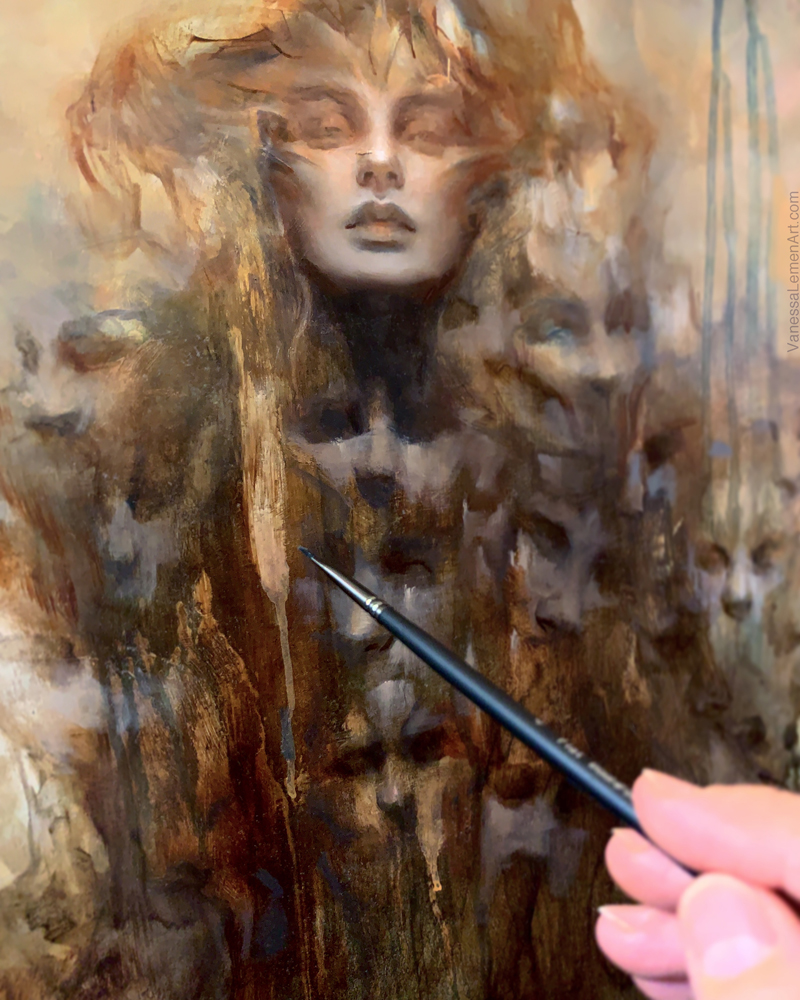
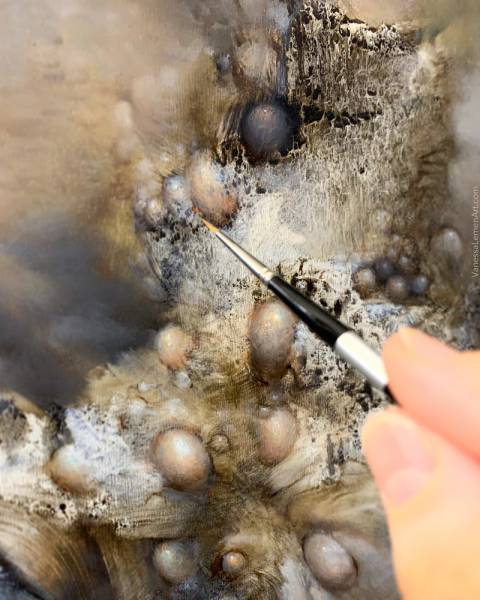

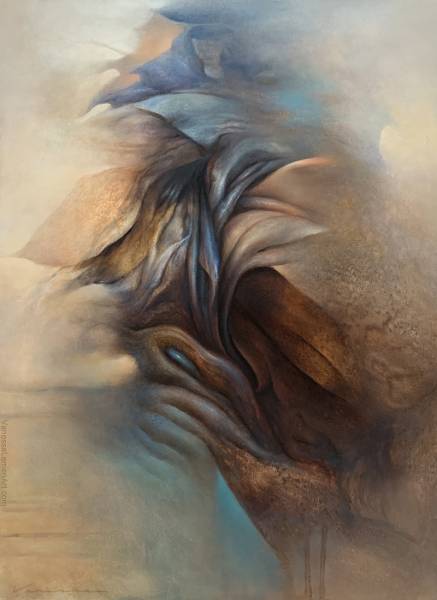
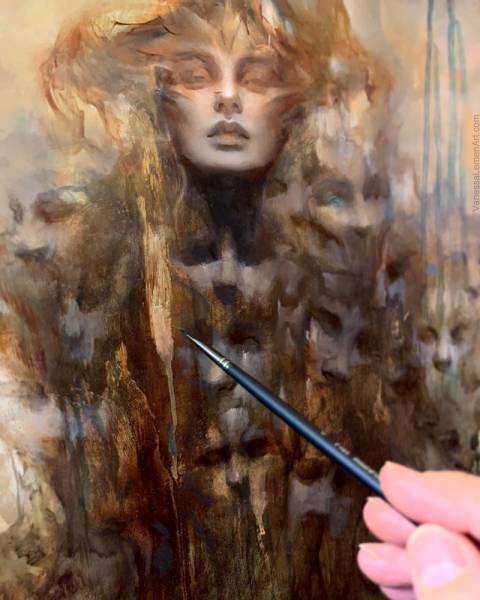
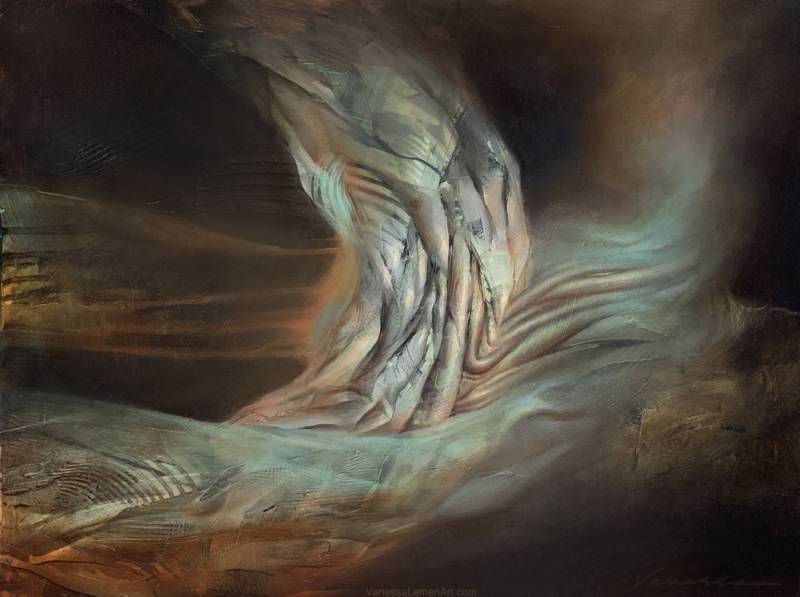
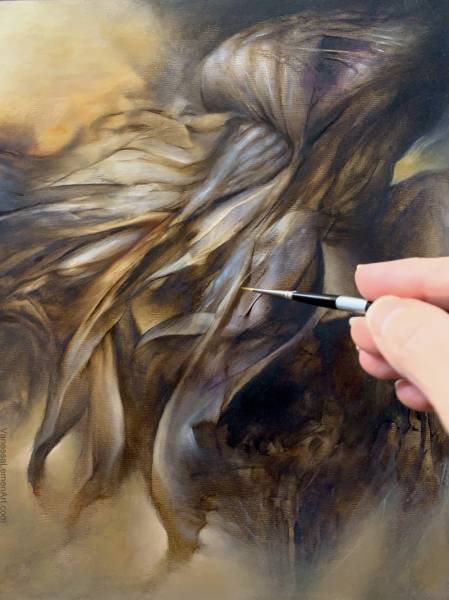

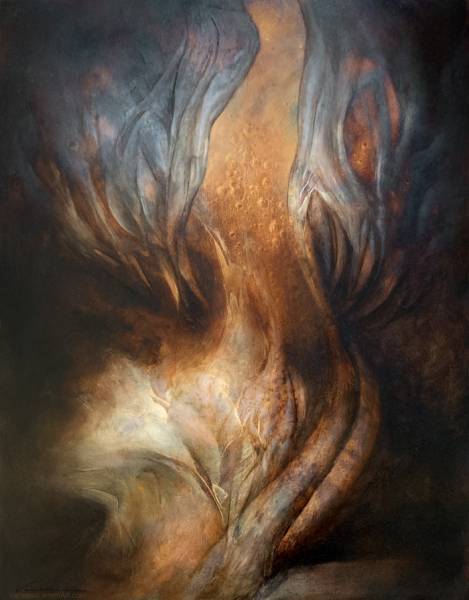
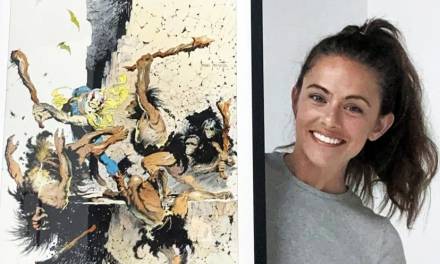
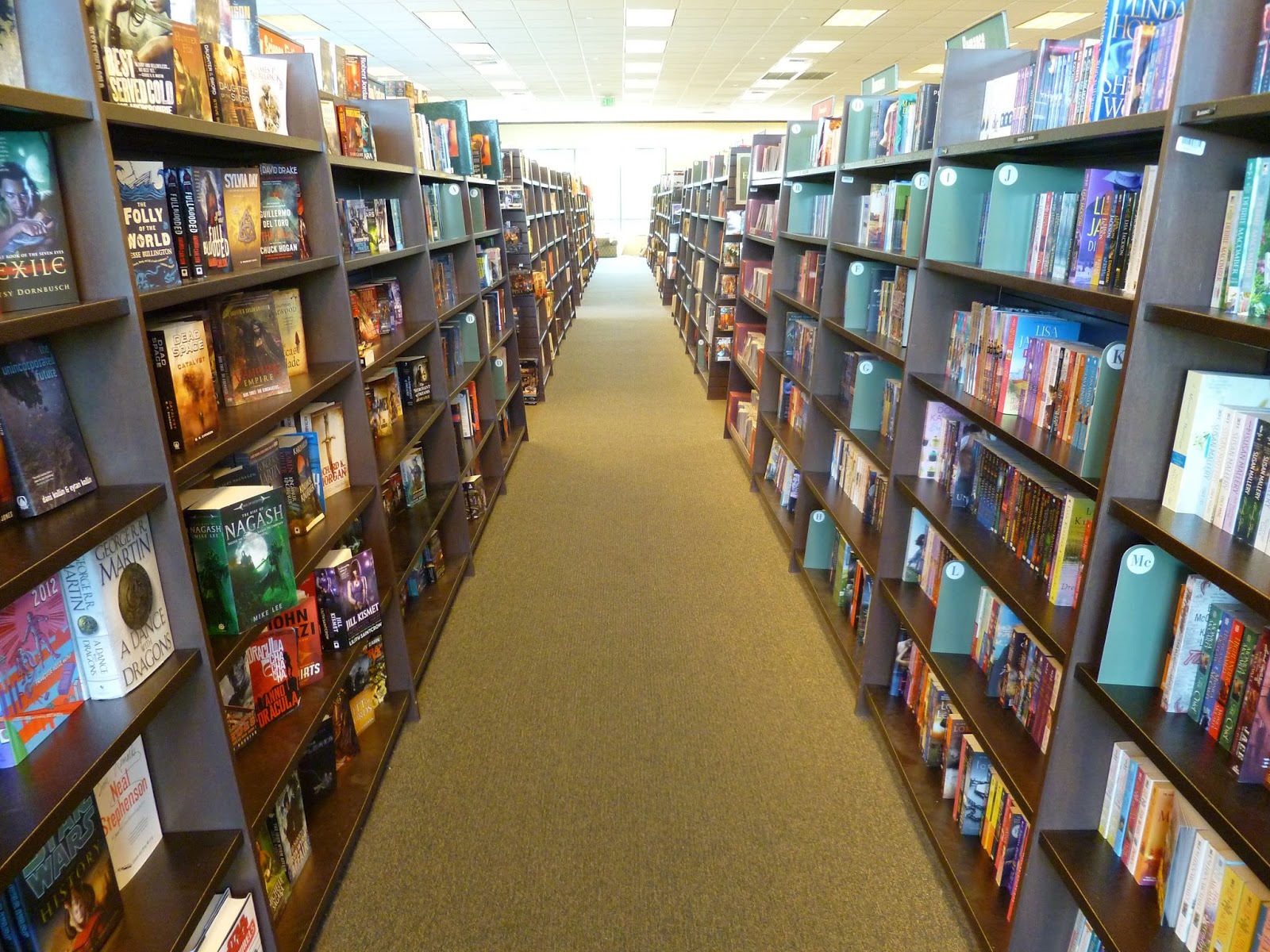
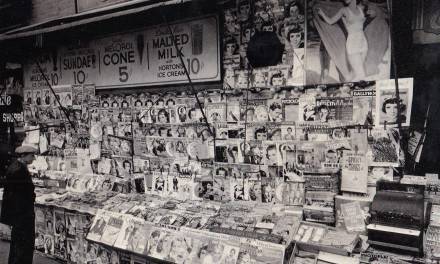


Recent Comments